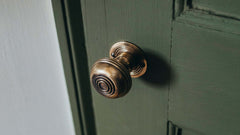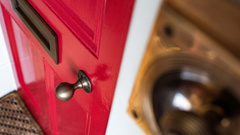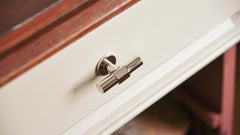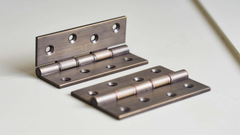Understanding Spindles
What is a spindle?
A spindle is a rod of metal, square in section, that is used to connect two door knobs together. It passes through the mortice latch or tubular lock (located within the door) and the two handles slot on either side of the door. Turning the knob or pushing down on a lever handle will rotate the spindle which in turn makes the latch move back and forth allowing the door to open.
Is there a standard spindle size?
Yes. The 'standard' thickness of a spindle is 7.6mm. Most UK latch manufacturers produce latch openings at 8mm to accommodate this.
However, we know that there are a number of latches particularly from the early 20th Century that had a slightly smaller opening, meaning that a 7mm spindle is required. We now stock Cottage Bun door knobs which have a 7mm spindle and two removable 'collars' meaning the spindle can be adjusted to 7.5mm or 8mm.
Types of spindles
Plain spindles are a square section length of metal rod that simply slots into the back of a door knob. These can normally only be used with mortise door knobs (both sides having a fixed rotating rose plate).
Slotted spindles are slotted to both ends and the door knobs using this spindle will come with grub screws which locate into this slot at any variable point becoming a wedge.
Drilled and tapped spindles have holes drilled at intervals to either end. This is a robust method as the knob attaches to the spindle using grub screws that screw into the spindle thereby transmitting the force of closing the door onto the strong spindle rather than the screws holding the rose plate in place.
Threaded spindles have a threaded end and generally the other end has a hole for a grub screw. This is another robust style as one knob attaches to the spindle using a grub screw into the hole and the 2nd door knob is threaded onto the other end and a second grub screw screws into the groove on the threaded end again transmitting the force of closing the door onto the strong spindle rather than the screws holding the rose plate in place. This method is generally found on rim door knobs.










